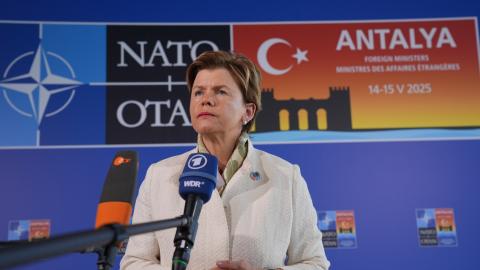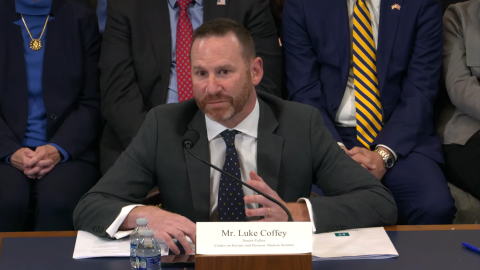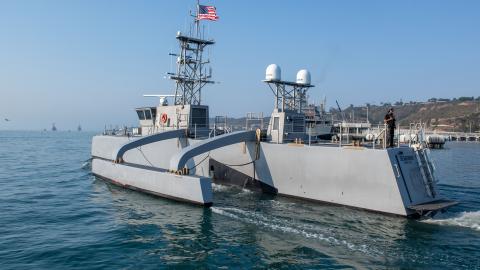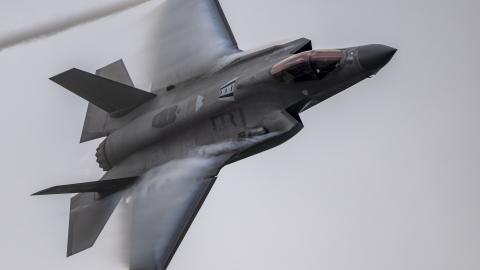One-Page Quick Reference
.jpg)
Joint requirements were conceived with worthy aims: to ensure every new military capability served not just a single service’s interests but the broader United States force to foster interoperability and channel investments toward warfighters’ needs. But despite decades of attempts at reform—including more than 10 overhauls and fiery statements from every recent vice chairman—the Joint Chiefs of Staff have failed to remedy the system’s fundamental flaws. The current Joint Capabilities Integration and Development System (JCIDS) is best understood as a burdensome layer of ceremony, divorced from the real decisions that shape America’s future military edge. Senior leaders continually discover that validated requirements do not guarantee resources or accountability, nor do they retire old wish lists that no longer match emerging threats. Instead, the system imposes yearslong validation delays on technological advancements that US industry—and America’s adversaries—could implement in months.
Far from coordinating truly joint solutions, JCIDS has become a breeding ground for process tyranny. The JCIDS process lacks any mechanism to cull outdated requirements or redirect resources toward higher priorities. It instead accumulates an ever-expanding inventory of so-called validated needs with no strategic triage. Military officers and staffers spend countless hours quibbling over formatting and definitions; a single comment can stall progress for months. In theory the Joint Staff is supposed to impose discipline and drive future-facing new capabilities. In reality the system locks developers into rigid technical specifications before testing new ideas in the field, removing critical decision space from both program managers and industry innovators. Meanwhile, cross-service decisions and prioritization happen elsewhere. The Deputy’s Management Action Group (DMAG) has no formal requirement mandate but ends up making consequential calls on resource trades and combatant command (CCMD) gaps.
The “big A” theory of acquisition—that JCIDS is an integral part of military functioning and meaningfully shapes budget decisions and program accountability—does not hold. Where rapid adaptation does occur, it usually bypasses the requirements pipeline altogether, via joint urgent operational needs (JUON) or middle tier of acquisition (MTA) initiatives. These processes succeed largely by enabling individual leadership, securing dedicated funding, and letting technical trades and performance evolve with learning. Meanwhile, JCIDS focuses on staffing documents that have no real positive impact. This process can add two years or more to the capabilities approval cycle, squandering time the US no longer has. The “big A” acquisition theory has failed.
This report offers a straightforward prescription: eliminate JCIDS and reinvest that time and expertise into solving genuine warfighting problems. The Department of Defense (DoD) does not need another protracted study or reorganization. Removing JCIDS is an immediate, discrete reform that would free resources and talent to accelerate experimentation, empower CCMDs, and let joint action flow from aligned funding rather than from hundreds of pages of requirements. JCIDS tries to ensure interoperability, accountability, and strategic alignment in acquisitions. But the DoD can address these problems more effectively by focusing on flexible pathways, direct warfighter feedback, and the budget levers that have driven change. It is time to end the charade, move beyond documents, and reclaim our advantage in military modernization.
Path to a Better Future
The DoD needs to embrace the obvious fact that only money, authority, and accountability can move the department toward a healthier acquisition system. This report proposes a faster, more operationally driven mechanism—centering on experimentation and prototyping, direct CCMD input, and an out-year budget holdback—to reward successful experiments and accelerate the adoption of effective systems. Budgets and resource allocation drive strategic decision-making, not committee-approved documents. If the DoD wants services to collaborate, it needs to incentivize acquisition officers to pursue synergies rather than defend fiefdoms. That means the department should channel a small portion of its topline into a holdback for proven joint solutions that show operational promise. Thus, this report’s core recommendation is eliminating the document-centric JCIDS entirely: it would free time and talent for continuous prototyping, problem-driven experiments, and the empowered oversight that actually synchronizes cross-service needs.
The report does not advocate chaos, fragmented buying sprees, or ignoring non-materiel dimensions of capability. Instead, the study recognizes that the best moments of joint action have come from either (1) streamlined, empowered processes like the rapid joint acquisition that solved the improvised explosive device crisis or (2) field experimentation activities that bypassed JCIDS altogether. The formal joint requirements pipeline enforces a linear approach that punishes creativity, prematurely specifies technical details, and diverts talented officers’ attention into a labyrinth of staffing. By contrast, successful programs have had well-defined operational problems, decisive resource allocation, and the flexibility to adapt on the fly.
Therefore, this report proposes a faster mechanism that is centered on operational problems. CCMDs should surface urgent operational challenges while the department’s senior staff holds a small but strategic reserve of joint funds, much like a bishop’s fund. When experiments or demonstrations reveal a winning concept—like new cross-domain kill chains or distributed cross-domain operational concepts leveraging uncrewed systems—the department could immediately route money to the aligned service that volunteers to field and sustain it. This incentive ensures that truly joint outcomes emerge by design, not by chance, and that the right players receive both the resource support and the credit.
Meanwhile, the services can still set and refine their lower-level and core force program requirements without an extra bureaucratic overlay. Interoperability does not hinge on checklists from the Joint Staff; it hinges on iterative engineering and real operator feedback, tested at speed under realistic conditions. The department can field a truly joint force if it deliberately aligns budgets and authorities behind a shared operational vision instead of appending more reviews and signoffs.
JCIDS has proven itself unreformable, and years of half-measures have only reinforced its flaws. The time to abolish it is now. Doubling down on documents and revised committees will not help warfighters—or the US strategic position—nearly as much as decisive action that moves resources, shifts culture, and empowers real innovation.


















